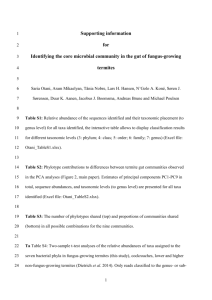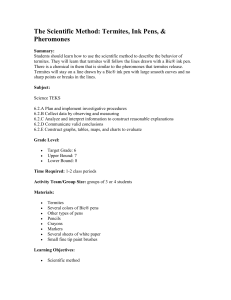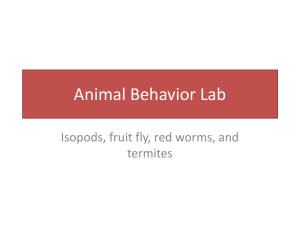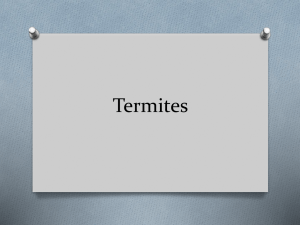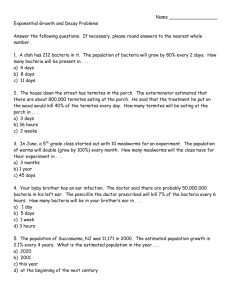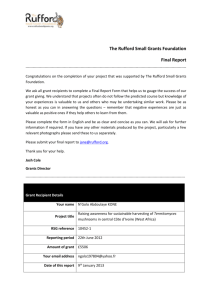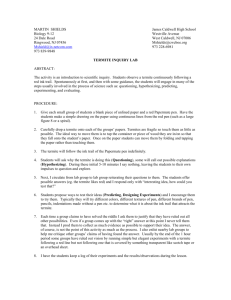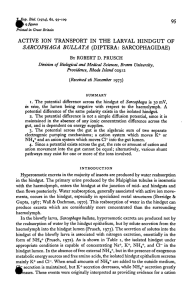Diapositive 1
advertisement
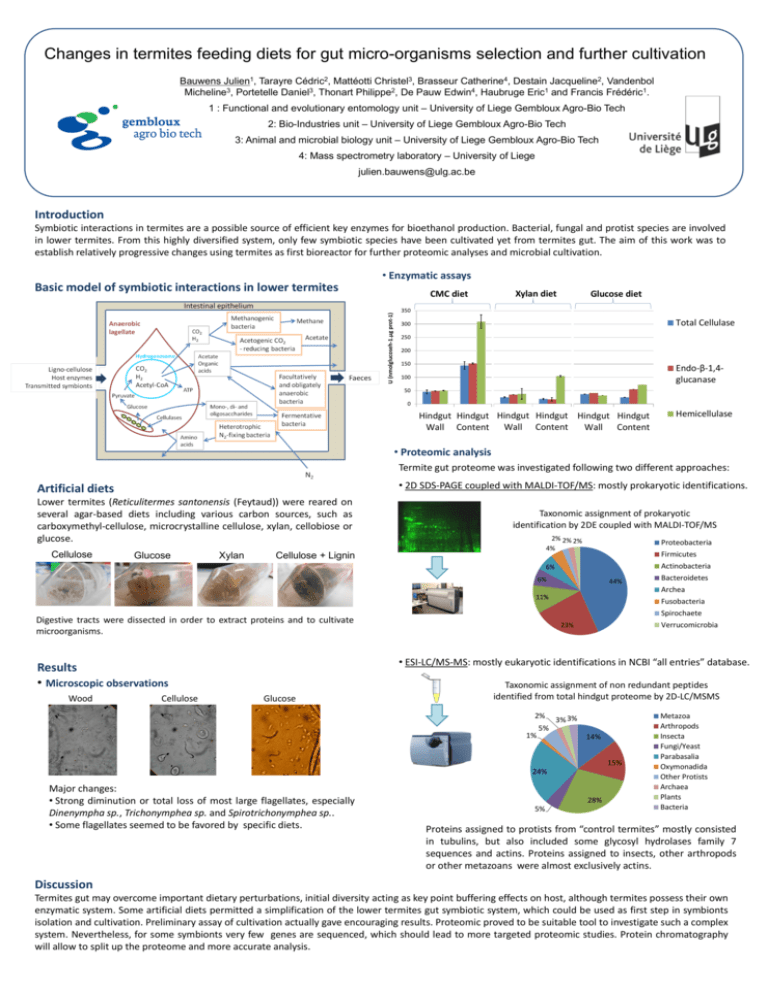
Changes in termites feeding diets for gut micro-organisms selection and further cultivation Bauwens Julien1, Tarayre Cédric2, Mattéotti Christel3, Brasseur Catherine4, Destain Jacqueline2, Vandenbol Micheline3, Portetelle Daniel3, Thonart Philippe2, De Pauw Edwin4, Haubruge Eric1 and Francis Frédéric1. 1 : Functional and evolutionary entomology unit – University of Liege Gembloux Agro-Bio Tech 2: Bio-Industries unit – University of Liege Gembloux Agro-Bio Tech 3: Animal and microbial biology unit – University of Liege Gembloux Agro-Bio Tech 4: Mass spectrometry laboratory – University of Liege julien.bauwens@ulg.ac.be Introduction Symbiotic interactions in termites are a possible source of efficient key enzymes for bioethanol production. Bacterial, fungal and protist species are involved in lower termites. From this highly diversified system, only few symbiotic species have been cultivated yet from termites gut. The aim of this work was to establish relatively progressive changes using termites as first bioreactor for further proteomic analyses and microbial cultivation. • Enzymatic assays Basic model of symbiotic interactions in lower termites U (nmolglucoseh-1.µg prot-1) CMC diet Xylan diet Glucose diet 350 Total Cellulase 300 250 200 150 Endo-β-1,4glucanase 100 50 0 Hindgut Hindgut Hindgut Hindgut Hindgut Hindgut Wall Content Wall Content Wall Content Hemicellulase • Proteomic analysis Termite gut proteome was investigated following two different approaches: • 2D SDS-PAGE coupled with MALDI-TOF/MS: mostly prokaryotic identifications. Artificial diets Lower termites (Reticulitermes santonensis (Feytaud)) were reared on several agar-based diets including various carbon sources, such as carboxymethyl-cellulose, microcrystalline cellulose, xylan, cellobiose or glucose. Cellulose Glucose Xylan Taxonomic assignment of prokaryotic identification by 2DE coupled with MALDI-TOF/MS Cellulose + Lignin 2% 2% 2% 4% Proteobacteria 6% Actinobacteria Firmicutes 6% 44% Bacteroidetes Archea 11% Spirochaete Digestive tracts were dissected in order to extract proteins and to cultivate microorganisms. Cellulose Verrucomicrobia 23% • ESI-LC/MS-MS: mostly eukaryotic identifications in NCBI “all entries” database. Results • Microscopic observations Wood Fusobacteria Glucose Taxonomic assignment of non redundant peptides identified from total hindgut proteome by 2D-LC/MSMS 2% 1% 3% 3% 5% 14% 15% 24% Major changes: • Strong diminution or total loss of most large flagellates, especially Dinenympha sp., Trichonymphea sp. and Spirotrichonymphea sp.. • Some flagellates seemed to be favored by specific diets. 28% 5% Metazoa Arthropods Insecta Fungi/Yeast Parabasalia Oxymonadida Other Protists Archaea Plants Bacteria Proteins assigned to protists from “control termites” mostly consisted in tubulins, but also included some glycosyl hydrolases family 7 sequences and actins. Proteins assigned to insects, other arthropods or other metazoans were almost exclusively actins. Discussion Termites gut may overcome important dietary perturbations, initial diversity acting as key point buffering effects on host, although termites possess their own enzymatic system. Some artificial diets permitted a simplification of the lower termites gut symbiotic system, which could be used as first step in symbionts isolation and cultivation. Preliminary assay of cultivation actually gave encouraging results. Proteomic proved to be suitable tool to investigate such a complex system. Nevertheless, for some symbionts very few genes are sequenced, which should lead to more targeted proteomic studies. Protein chromatography will allow to split up the proteome and more accurate analysis.
